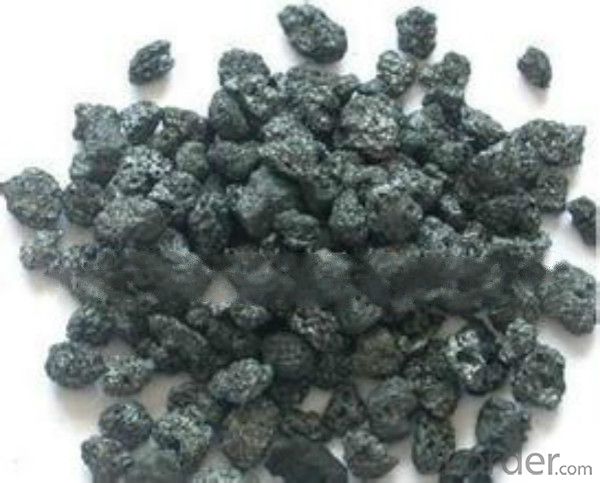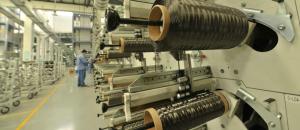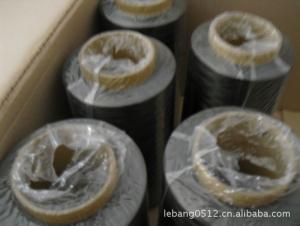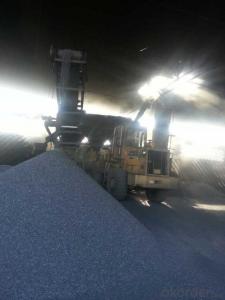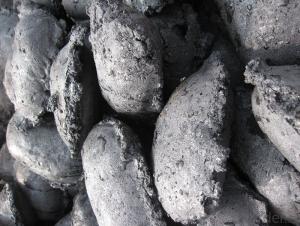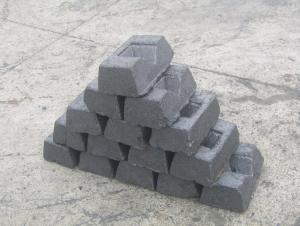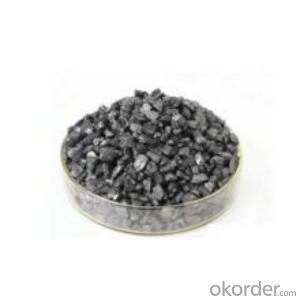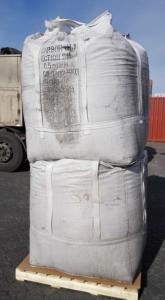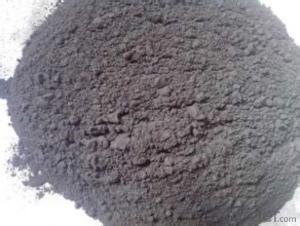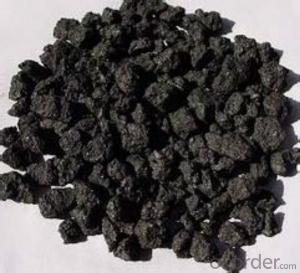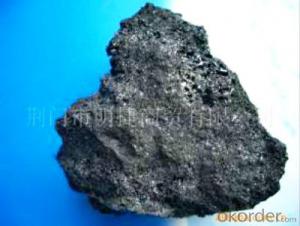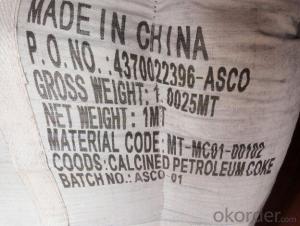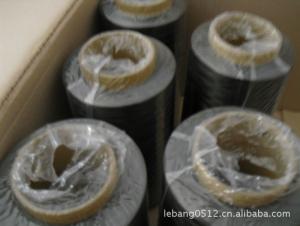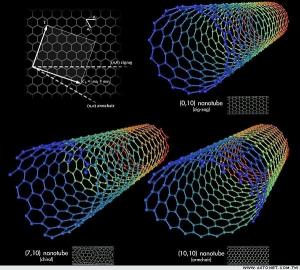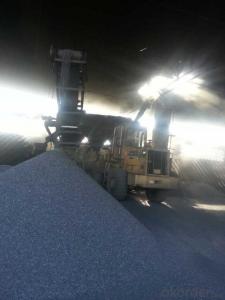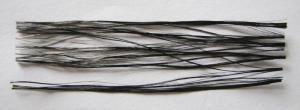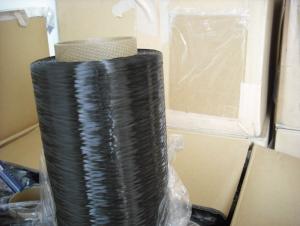FC 98.5% Calciend Petroleum Coke Manufactured in China
- Loading Port:
- Tianjin
- Payment Terms:
- TT OR LC
- Min Order Qty:
- 20.2
- Supply Capability:
- 2020 m.t./month
OKorder Service Pledge
OKorder Financial Service
You Might Also Like
Brief introduction
Calcined Petroleum Coke comes from delayed coke which extracted from oil refinery. Although It contains a little bit higher level of sulfur and nitrogen than pitch coke, the price advantage still makes it widely used during steel-making and founding as a kind of carbon additive/carburant.
BaoSteel is world famous organization. It is well-known in the world. This calcined petroleum coke's raw material is from Bao Steel, which has great quality guarantee. Bao Steel also named this coke as Pitch Coke.
Features
Our product has follwing advantages:
The morphology, chemistry and crystallinity of recarburisers
have a major impact on the overall casting cost. The combined
application and cost benefits, which are derived through the
use of Desulco, enable foundries to manufacture castings in a
highly cost effective manner.
reduces
Recarburiser consumption
Power consumption
Inoculant consumption
MgFeSi consumption
Furnace refractory wear
Scrap rate
Tap to tap time
Slag inclusions risk
Chill
increases
Casting microstructure
Productivity
Process consistency
Specifications
Products | CPC | ||
F.C.% | 98.5MIN | 98.5MIN | 98MIN |
ASH % | 0.8MAX | 0.8MAX | 1MAX |
V.M.% | 0.7 MAX | 0.7 MAX | 1 MAX |
SULFUR % | 0. 5MAX | 0. 7MAX | 1MAX |
MOISTURE % | 0.5MAX | 0.5MAX | 1MAX |
Pictures
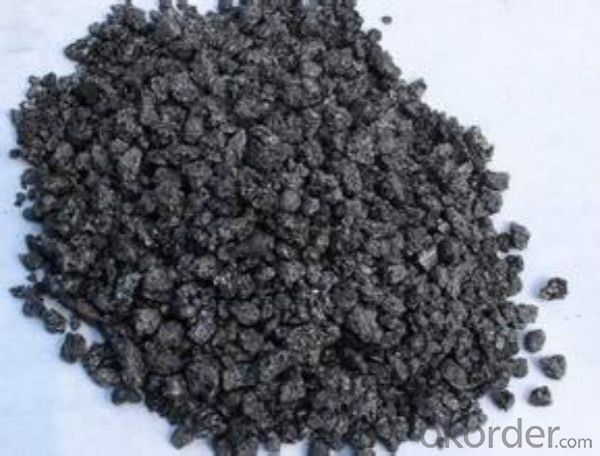
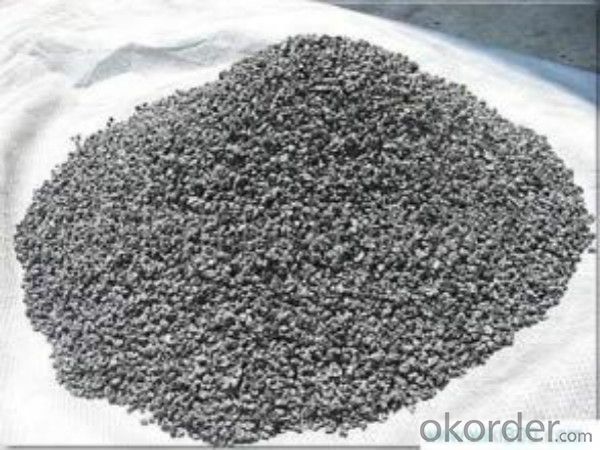
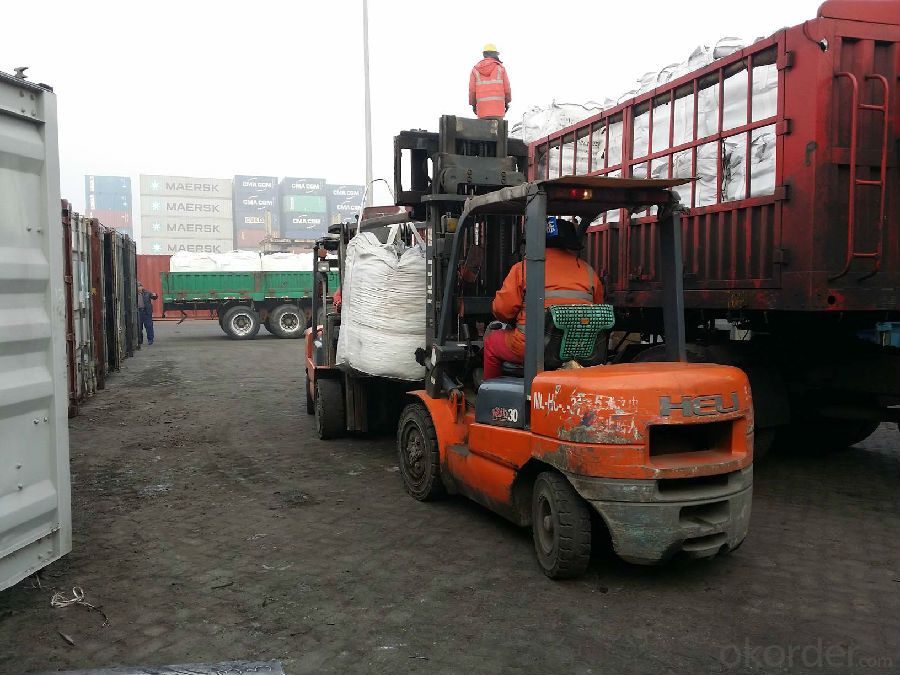
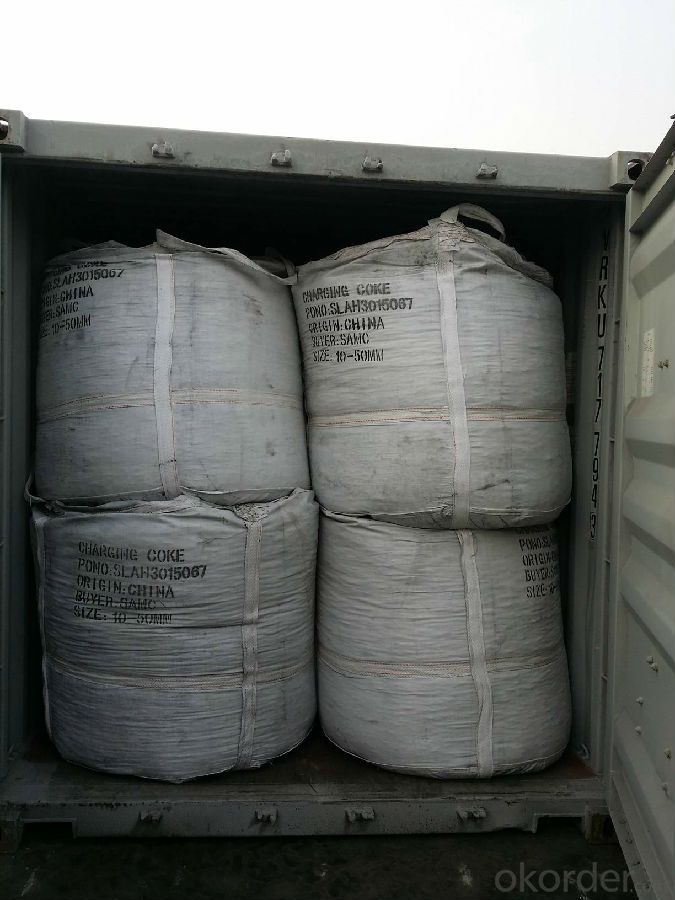
FAQ
1 What is the package?
In jumbo bag with/without pallet
2 What is the delivery time?
25 days after receiving the workable LC or down payment
3 What is the payment term?
T/T, L/C,D/P,D/A
- Q: How does carbon contribute to the structure of DNA?
- Carbon is a crucial element in the structure of DNA. It plays a fundamental role in the formation of the sugar-phosphate backbone of the DNA molecule. The backbone is composed of alternating sugar and phosphate molecules, and the sugar molecule in DNA is deoxyribose. Carbon is a major component of deoxyribose, with each deoxyribose sugar containing five carbon atoms. These carbon atoms provide the backbone with stability and rigidity, allowing it to maintain the overall structure of the DNA molecule. Furthermore, carbon is also involved in the formation of the nitrogenous bases that make up the rungs of the DNA ladder. There are four nitrogenous bases in DNA: adenine (A), guanine (G), cytosine (C), and thymine (T). Carbon atoms are present in the structure of each of these bases, contributing to their unique chemical properties. Carbon-containing functional groups, such as amino and keto groups, participate in hydrogen bonding and stacking interactions that determine the base pairing within the DNA double helix. In summary, carbon is an essential component of DNA's structure. It contributes to the stability and rigidity of the sugar-phosphate backbone and is also involved in the formation of the nitrogenous bases. The unique properties of carbon allow DNA to maintain its double helix structure and facilitate the accurate transmission of genetic information.
- Q: What is the chemical symbol for carbon?
- The chemical symbol for carbon is C.
- Q: Excuse me, carbon steel, carbon steel pipe, seamless steel pipe, spiral steel pipe, what is the difference?
- There is no joint in the whole. The material can be used according to the needs, often used for high temperature, high pressure and other fluids. Hence, it is called seamless steel tube. The spiral steel tube is also formed by the heating and rotating of the strip steel. The utility model is suitable for the fluid below 30Kg, and the material can replace the seamless pipe with the big caliber and difficult to be manufactured according to the requirement, and is suitable for the medium and low pressure fluid with large caliber.
- Q: How is carbon used in the medical field?
- Carbon is used in various ways in the medical field due to its unique properties. One of the most common applications of carbon is in the form of activated charcoal, which is widely used in hospitals to treat cases of poisoning or drug overdoses. Activated charcoal has a large surface area, allowing it to adsorb toxins and chemicals, preventing them from being absorbed into the bloodstream. Carbon is also utilized in medical imaging techniques such as positron emission tomography (PET) scans. In PET scans, a radioactive form of carbon, known as carbon-11, is used to label molecules such as glucose. This labeled carbon is then injected into the patient, and its distribution in the body is detected by a PET scanner. This technique helps in the diagnosis and monitoring of various diseases, including cancer, by visualizing metabolic activity in different organs and tissues. Furthermore, carbon-based materials, such as carbon nanotubes and graphene, are extensively studied for their potential applications in drug delivery systems. These materials can be modified to carry therapeutic agents, such as drugs or genes, and deliver them to specific targets in the body. Carbon nanotubes, in particular, have shown promising results in enhancing drug delivery efficiency and reducing side effects. Moreover, carbon is used in the manufacturing of medical devices and implants. Carbon fiber-reinforced polymers are employed in orthopedic implants and prosthetics due to their strength, flexibility, and biocompatibility. Carbon-based materials also play a crucial role in the production of electrodes for various medical devices like pacemakers, defibrillators, and neurostimulators. In summary, carbon finds numerous applications in the medical field, ranging from treating poisonings to enhancing diagnostic imaging techniques, drug delivery systems, and the production of medical devices. It continues to be an essential component in advancing medical technology and improving patient care.
- Q: What is carbon offsetting in the travel industry?
- Carbon offsetting in the travel industry refers to the practice of compensating for the greenhouse gas emissions generated by travel activities, such as flights or accommodations, by investing in projects that reduce or remove an equivalent amount of carbon dioxide from the atmosphere. This can include initiatives like reforestation, renewable energy projects, or energy efficiency improvements. The aim is to mitigate the environmental impact of travel and contribute to the overall goal of reducing carbon emissions.
- Q: Is the hardness or softness of the steel with higher carbon content?
- With the increase of carbon content, the strength and hardness of steel increase, while the plasticity and toughness decrease. When the carbon content is more than 1%, the strength of steel decreases.
- Q: How is carbon used in the production of nanoelectronics?
- The production of nanoelectronics involves the diverse utilization of carbon. One of the most notable applications is seen in the creation of carbon nanotubes (CNTs), which are cylindrical structures composed solely of carbon atoms. These nanotubes possess exceptional electrical and mechanical properties that render them highly suitable for incorporation into nanoelectronic devices. CNTs can serve as transistors, which serve as the fundamental building blocks of electronic circuits. Due to their diminutive size and outstanding electrical conductivity, CNT transistors have the capacity to generate high-performance, low-power devices. Consequently, they hold the potential to supplant conventional silicon transistors, thus enabling the development of more sophisticated and compact electronic devices. In addition, carbon plays a pivotal role in the production of graphene, a single layer of carbon atoms arranged in a two-dimensional honeycomb lattice. Graphene exhibits extraordinary electrical conductivity, thermal conductivity, and mechanical strength. Consequently, it can function as a conductive material in nanoelectronics, thereby facilitating the creation of swifter and more efficient electronic devices. Moreover, carbon-based materials can be employed in nanoelectronics for energy storage purposes. For example, carbon nanotubes and graphene can be harnessed in supercapacitors, energy storage devices that possess the ability to rapidly store and discharge substantial amounts of electrical energy. These carbon-based energy storage systems hold the potential to revolutionize the realm of portable electronics and electric vehicles. In conclusion, the extensive utilization of carbon in the production of nanoelectronics can be observed. Its distinctive properties, including heightened electrical conductivity, mechanical strength, and thermal conductivity, render it an ideal material for the advancement of high-performance electronic devices. Carbon nanotubes, graphene, and other carbon-based materials serve as crucial components in the fabrication of nanoelectronic devices, thereby enabling progress in computing power, energy storage, and the miniaturization of electronic components.
- Q: How does carbon impact the formation of smog?
- Carbon plays a significant role in the formation of smog, particularly in the form of carbon monoxide (CO) and volatile organic compounds (VOCs). When fossil fuels are burned, such as in vehicle engines or power plants, they release carbon monoxide into the atmosphere. Carbon monoxide is a colorless and odorless gas that can react with other pollutants in the presence of sunlight to form ground-level ozone, a key component of smog. Furthermore, carbon-based compounds known as volatile organic compounds (VOCs) are also emitted from various sources, including industrial processes, gasoline vapors, and chemical solvents. These VOCs can undergo chemical reactions in the presence of nitrogen oxides and sunlight to create ground-level ozone as well. Both carbon monoxide and VOCs contribute to the formation of smog by reacting with nitrogen oxides (NOx) in the presence of sunlight. This chemical reaction forms ground-level ozone, which is a primary component of smog. Ozone is harmful to human health and the environment, and its formation is exacerbated by the presence of carbon emissions. Reducing carbon emissions is crucial to mitigating the formation of smog. Transitioning to cleaner and more sustainable sources of energy, such as renewable energy, can help decrease the amount of carbon released into the atmosphere. Additionally, implementing stricter emissions standards for vehicles and industrial processes can also contribute to reducing carbon emissions and consequently limit the formation of smog.
- Q: Can carbon 14 identify the age of porcelain?
- Identification of porcelain by carbon 14 is not very accurate.The so-called carbon fourteen assay, radiocarbon dating, uses the carbon fourteen, which is widely found in nature, to measure the age of animals and plants. In prehistoric and ancient, the smaller the impact of human activities on the earth's environment, and carbon in nature fourteen proportions remain constant, animals and plants in the survival time, due to its in vivo The new supersedes the old. sake, carbon fourteen also remained constant; however, the once dead, in fourteen carbon will continue to decay, the half-life is 5730 years, in the sealed state and the outside world is obviously different, which is the principle of carbon fourteen dating. We must note that animals and plants belong to the organic matter. However, most cultural relics, such as porcelain, pottery and bronze, are inorganic. Therefore, the application of carbon fourteen dating in archaeology is very limited.
- Q: Carbon Finance: Carbon Finance
- Carbon finance does not have a unified concept. Generally speaking, it refers to all financial activities that serve to limit greenhouse gas emissions, including direct investment and financing, carbon index trading and bank loans. The rise of "carbon finance" stems from changes in international climate policy and, precisely, two international conventions of great significance - the United Nations Framework Convention on climate change and the Kyoto protocol. Carbon finance definition: improved use of financial capital to drive the environmental rights and interests, to the laws and regulations for support, the use of financial means in the market platform makes carbon financial products and derivatives trading or to circulation, and eventually achieve a low-carbon development, green development and sustainable development objective. The United Nations Conference on environment and Development held in June 1992 in Brazil, Rio De Janeiro, more than 150 countries have established the "United Nations Framework Convention on climate change" (United Nations Framework Convention on Climate Change, referred to as the "Framework Convention"). The ultimate goal of the Convention is to stabilize atmospheric concentrations of greenhouse gases at levels that do not harm the climate system.
Send your message to us
FC 98.5% Calciend Petroleum Coke Manufactured in China
- Loading Port:
- Tianjin
- Payment Terms:
- TT OR LC
- Min Order Qty:
- 20.2
- Supply Capability:
- 2020 m.t./month
OKorder Service Pledge
OKorder Financial Service
Similar products
Hot products
Hot Searches


